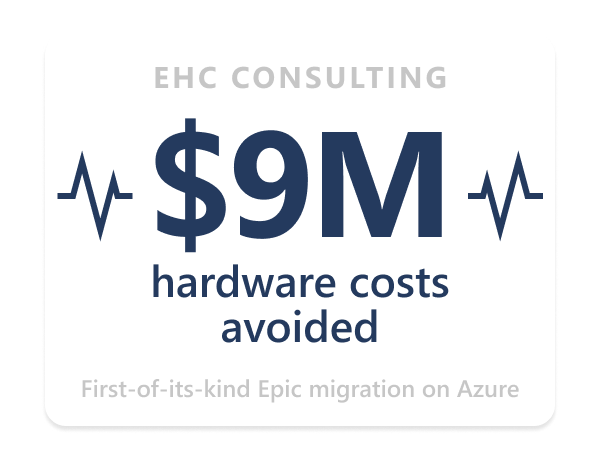A first-of-its-kind migration, built from the ground up
From the outset, the project was designed as a collaborative effort. EHC embedded deeply with Community’s strong in-house IT department, partnering with them through every phase of the migration while supporting Community’s efforts to manage and scale the environment long-term.
“We didn’t want this to be a situation where a vendor just builds it and hands it off,” said Chris Stewart, Vice President of Technology Services at Community Health Network. “It was truly a co-build.”
The engagement began with a full infrastructure and environment assessment, followed by a phased deployment strategy that included non-production, training, disaster recovery (DR), and, finally, production. Microsoft played an active and pivotal role throughout the project, providing ECIF funding to support the implementation and validating the solution through Well-Architected Framework and Go-Live Readiness assessments. The migration also included hands-on training for Community’s teams in Terraform and Azure provisioning, ensuring they could take full ownership of the cloud-hosted Epic environment after go-live.

Ultimately, the collaboration yielded a series of industry firsts (as reported by the project team). EHC architected the solution using InterSystems’ Enterprise Cache Protocol (ECP) for Epic, making it the first known use of this architecture in native Microsoft Azure. The team also introduced Azure Ultra Disk for Epic production workloads, a first-of-its-kind implementation that delivered better-than-expected performance during DR testing, eliminating the need to failback to on-premises systems.
Together, EHC, Microsoft, and Community built a secure, scalable foundation for future-ready care—one that preserved operational control while enabling long-term innovation. And all along the way, the teams worked hand-in-hand to troubleshoot challenges, validate architecture, and transfer knowledge in real time. “We trusted Microsoft, and Microsoft trusted [EHC Consulting],” said Stewart. “That trust chain worked.”